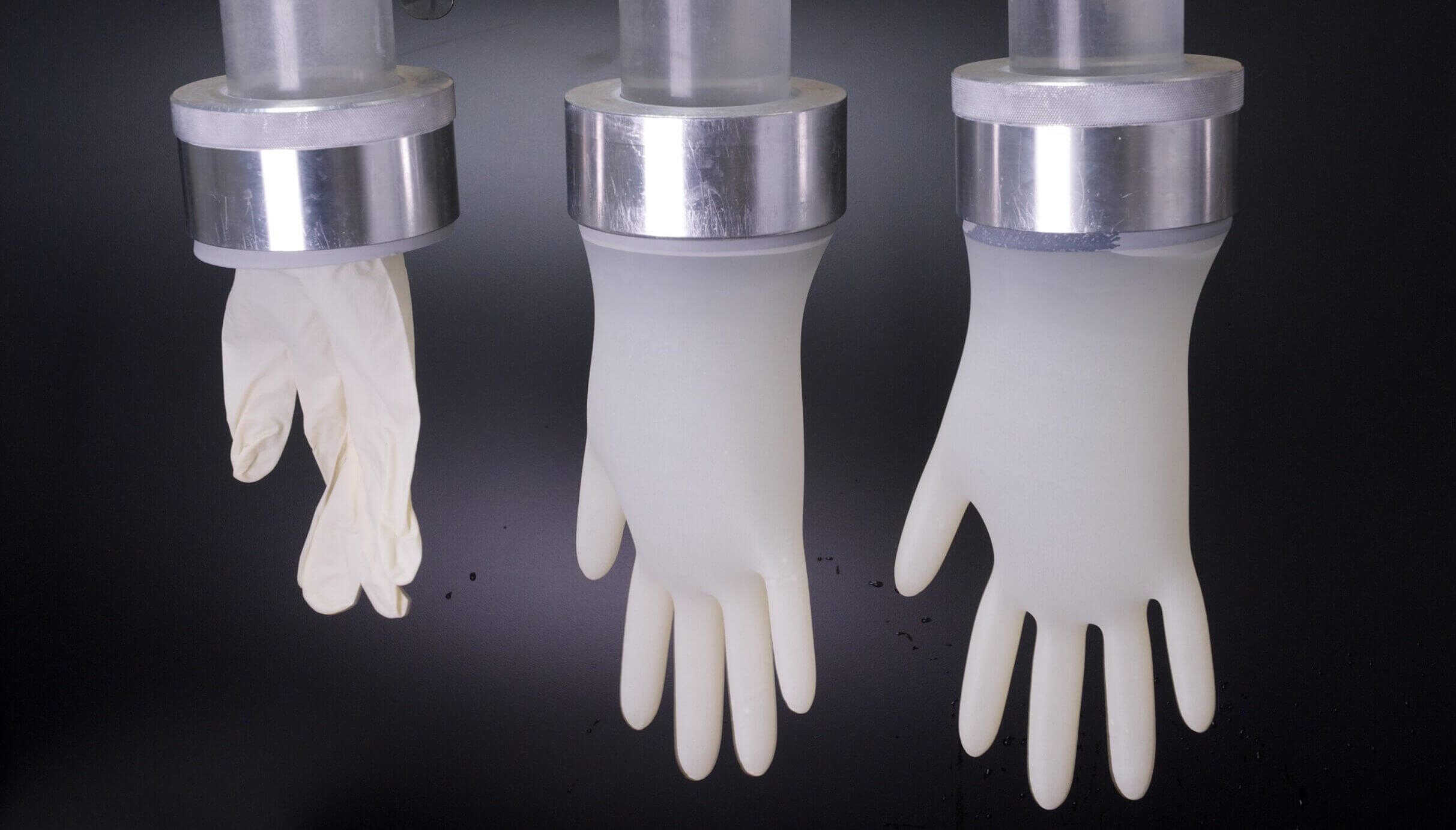Why is Glove Testing Important?
Glove Tests are used to evaluate dimensions, tensile strength and elongation, puncture, residual powder, leakage, simulated use, heat aging degradation, and viral barriers. These tests are appropriate for rubber, nitrile, and vinyl materials. Nelson Labs performs tests in compliance with ASTM D3578 (rubber exam), ASTM D3577 (rubber surgical), ASTM D6319 (nitrile), ASTM D5250 (vinyl), and ASTM F1342 puncture test standards. Samples are heat aged in an oven.
Applicable Standards
- ASTM D5151
- ASTM D3579
- ASTM D6124
- ASTM F1342
- NFPA 1999
What Glove Testing does Nelson Labs Perform?
The Glove tests are conducted according to current FDA expectations for patient examination gloves (ASTM D3578), medical surgical gloves (ASTM D3577), and PVC gloves (ASTM D5250). It includes adherence to ASTM standards as well as the NFPA 1999 standard for physical properties. Glove testing includes:
Tensile test, elastomeric materials (ASTM D412) / Glove tensile test, aged and unaged (ASTM D3578): The test specimen is cut with the ASTM D412 die C unless otherwise requested. Marks are made 1 inch apart and the median of three thickness measurements is used in calculating the cross-sectional area. The instrument is set up with the crosshead speed to 20 inches per minute and the specimen is inserted into the grips. The elongation of the specimen is measured between the marks with an extensometer. For aged tensile, the gloves are aged at 70° for 3 days (vinyl) or 7 days (Nitrile, latex), allowed to rest for 16-96 hours, then tested. Puncture GLU 140 is also used for fabrics and plastic films.
Whole glove viral barrier (NFPA 1999): This test procedure is used for evaluating viral barrier properties of whole gloves. Gloves are suspended in a flask filled and subject to the challenge virus (phiX174 bacteriophage) at a concentration of ≥108 plaque-forming units (PFU) per mL. The test samples are agitated throughout a 1-hour challenge on an orbital shaker operated at 100 – 115 revolutions per minute (rpm) and then assayed for viral penetration.
Glove heat aging degradation test (ASTM D573, NFPA 1999): For ASTM D573, the test specimen is conditioned in an oven at 70 ± 2°C for 166 ± 2 hours. For NFPA 1999, the test specimen is conditioned in the oven at 100 ± 2°C for 22 ± 0.3 hours.
Evaluation of leakage in gloves (ASTM D5151): This test is intended to determine barrier evaluation of gloves by visual and leak test procedures on synthetic and latex examination and/or surgical gloves. The method consists of visual examination of the gloves, securing a test glove to a plastic cylinder, and filling the glove with 1000 mL of water. The glove is suspended and examined for visual leaks immediately after addition of the water and at 2 minutes after adding the water.
Puncture resistance (ASTM F1342): This test method determines the puncture resistance of a material specimen by measuring the force required to cause a sharp-edged puncture probe to penetrate through the specimen.
Glove test for residual powder, aged and unaged (ASTM D6124): This test is used for the evaluation of residual powder on gloves by weight. The procedure consists of rinsing individual gloves with water, filtering the liquid, and subtracting the tare filter weight from the final filter weight after desiccation.
Glove physical dimensions (ASTM D3578-91, ASTM D573, ASTM D5250): This test measures the dimensions of the gloves in millimeters. The length is measured from the tip of the second finger to the outside edge of the cuff. The width of the palm is measured at a level between the base of the index finger and the base of the thumb. The minimum thickness is measured at the tip of the second finger and the palm.
Recommended replicates: Varies depending on the acceptable quality level (AQL) per sampling plan for each individual test. For the ASTM D5151, 125 gloves are required (surgical or examination) to begin testing. For the whole glove barrier test, 5 gloves are required. For further guidance, please refer to ISO 2859 or contact Nelson Labs and we’ll be happy to help you determine quantity needed.



